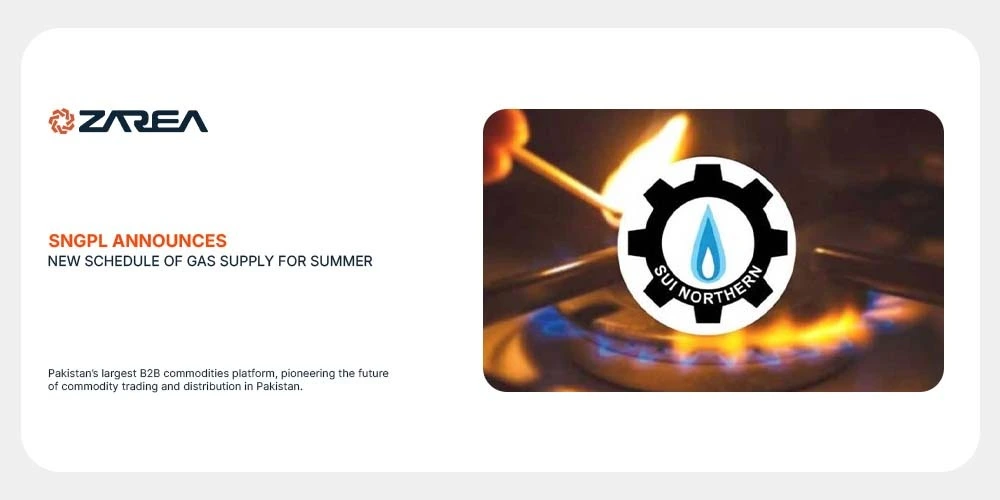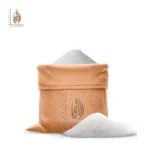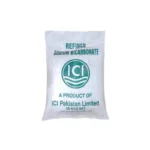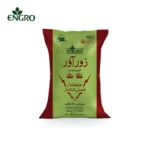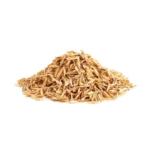SNGPL Announcement – New Schedule of Gas Supply:
Rawalpindi/Lahore – Sui Northern Gas Pipelines Limited (SNGPL) has revealed a revised gas supply timetable for Winter 2025. Lowering temperatures and increased domestic consumption are the main causes of this revised schedule to increase pressure. After Eid-ul-Fitr, the updated plan will be implemented with the goal of maintaining steady pressure. Also equitable distribution throughout Punjab, Khyber Pakhtunkhwa, and the surrounding regions is a part of the plan.
Although the action is meant to stabilize the system in big cities like Rawalpindi, Islamabad, and Lahore. Yet consumers are already frustrated since they are having trouble during important workday hours getting gas.
New Gas Supply Timetable (Starting Right Now):
Under the updated load-shedding strategy, gas will now be available only during designated mealtime windows. The schedule is as follows:
| Time Slot | Duration |
|---|---|
| Morning | 6:00 AM – 9:00 AM |
| Afternoon | 12:00 PM – 2:00 PM |
| Evening | 6:00 PM – 9:00 PM |
Customers will be without gas for more than 15 hours a day. This will make it extremely difficult to cook, heat water, and take care of other everyday necessities. Around these houses, especially in households without other energy sources this plan will cause difficulty in living.
Customers Frustrated – “How Are We Supposed to Cook?”:
Islamabad, Lahore, and Rawalpindi‘s numerous citizens have expressed their displeasure. They claim that the three-slot supply schedule is impractical and interferes with their day-to-day activities.
“We acknowledge that there is a scarcity, but it is irrational to limit gas to a few hours. This is not how families with small children or elderly members can operate.” (A frustrated housewife from Rawalpindi).
The hashtags #GasShortage and #SNGPL became viral on social media shortly after the news spread. The majority of consumers called out for longer-term infrastructure solutions and more open planning.
Why The New Plan for Gas Supply?
SNGPL claims that they attempt to maintain steady gas pressure during peak hours. They are also upgraded to comply with all government regulations. Meanwhile, more than 7.22 million customers depend on SNGPL in Punjab and KP according to a report. When the demand for gas and electricity is strong particularly during the summer months. It is imperative to maintain consistent distribution according to demand.
Although fresh natural gas reserves will be added to the system in the upcoming months. Yet the utility stressed that the adjustment is only temporary and will be reassessed.
Energy Crisis & Recent Discoveries:
While domestic supply struggles persist, there is a glimmer of hope. Mari Petroleum Company Limited (MPCL) recently discovered new oil and gas reserves in North Waziristan at the Spinwam-1 Well. The site is producing:
- 20.48 MMCFD of natural gas
- 117 barrels of oil per day
This is the second major success from the same well and is expected to help reduce the gap between national energy demand and supply. In addition, gas from the Ghazij Field in Sindh—another MPCL discovery—is now being channeled into the SNGPL network, albeit gradually.
Visit Zarea now to view building materials and biomass products, check out the costs, and place your bulk order!
The Bigger Picture – Pakistan’s Energy Challenges:
Pakistan continues to struggle with balancing energy supply and demand. Key issues include:
- Insufficient domestic production
- High dependence on imported LNG
- Ageing distribution infrastructure
- Rising urban household demand
Energy analysts say that short-term rotational supply—as SNGPL is now implementing—is inevitable until larger reserves come online or import agreements stabilize.
What Can Consumers Do?
While the frustration is real, here are a few practical steps households can take to manage under the current gas supply limitations:
- Plan meals around gas availability hours
- Invest in electric or solar backup systems for kitchens and water heating
- Use pressure cookers and efficient burners to reduce gas consumption
- Report low-pressure issues or violations to SNGPL via its helpline or mobile app
Final Thoughts:
Public sentiment warms up during the summer. The decision to restrict gas supplies to just three time slots per day is naturally contentious, even if SNGPL’s action is intended to guarantee steady pressure and equitable distribution.
There is promise for a more reliable and sustainable energy future because of recent gas finds and government initiatives to improve infrastructure. In the meanwhile, planning, patience, and sensible consumption are still essential.
Stay informed on the latest gas supply updates and energy sector news here. For real-time alerts, follow SNGPL’s official platforms and your city’s local energy advisory.
FAQ’s:
How much Sui gas is left in Pakistan?
The Sui region of Balochistan has the largest natural gas field, making up 6% of the total. The nation’s proven reserves are equal to twelve times its yearly usage. This indicates that there will be gas for roughly 12 years.
What do you mean by gas supply?
The term “gas supply” describes the availability of gas for use in a variety of applications, including gas chromatography detectors. Gas can be a single gas, such as helium, or a mixture of gases, such as hydrogen and air.
How can I get a new gas connection in Pakistan?
To obtain the challan form or bill for the deposit of the security amount, service line, and other charges (if applicable), you must go to the regional office, sub office, or customer services center closest to your home with a signed Gas Sales Contract, House Line Plan, House Line Installation Certificate, and a copy of your CNIC.
Why is there a gas shortage in Pakistan?
Pakistan contributes 0.8% of the world’s natural gas production with 30.6 billion cubic meters (BP, 2021). Although Pakistan’s demand for gas has increased significantly, the country has been experiencing a massive gas shortage as a result of the uneven distribution of natural gas resources.
Which country Pakistan import gas from?
Qatar is Pakistan’s main supplier of natural gas, including LNG, however Nigeria, Indonesia, and other nations also provide substantial imports. According to The Observatory of Economic Complexity, Pakistan specifically imported the most petroleum gas from Qatar in 2023, followed by Iran, Iraq, Nigeria, and Indonesia. In addition, Pakistan imports liquefied natural gas from Nigeria, Indonesia, Qatar, and other nations.

